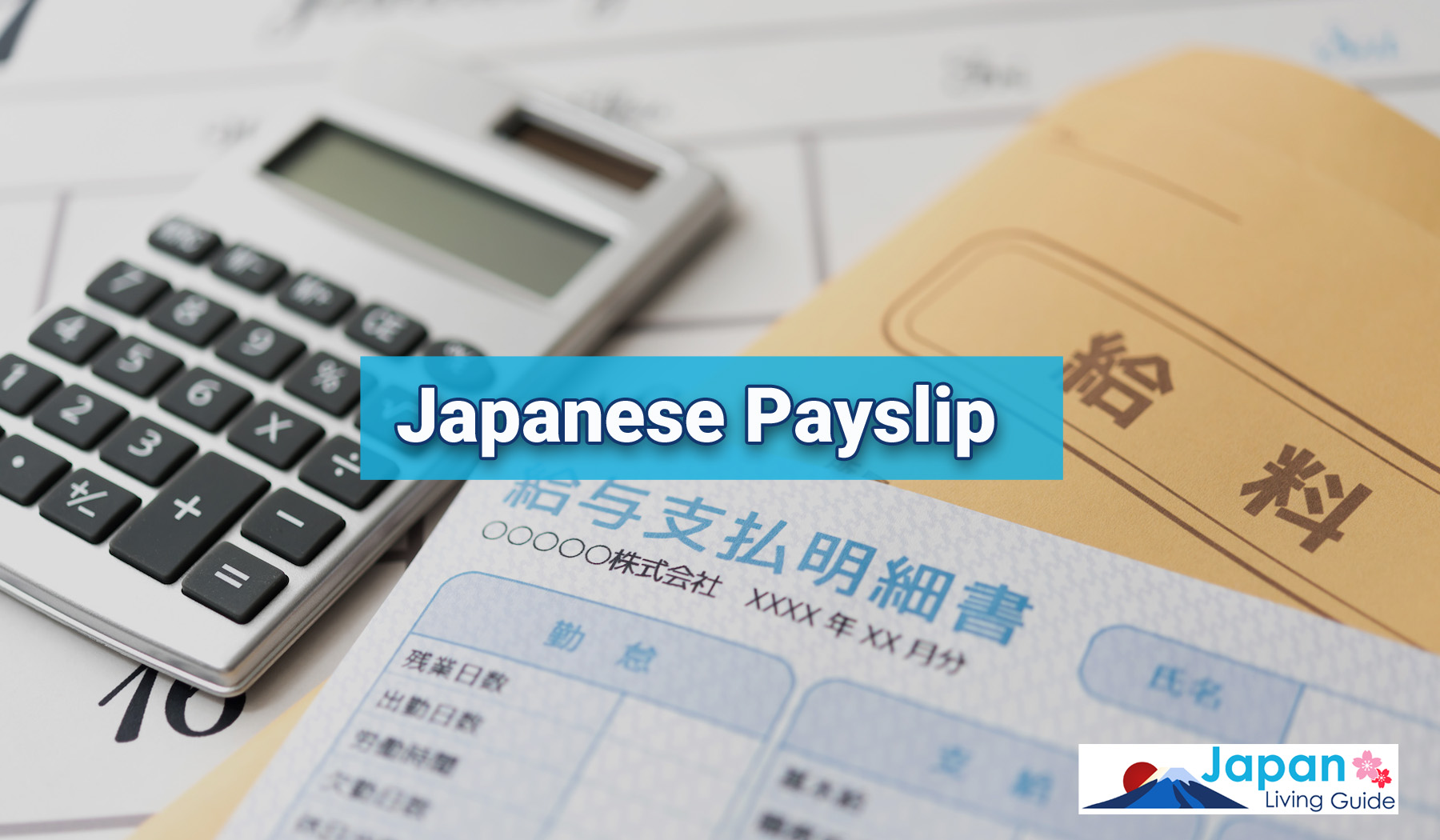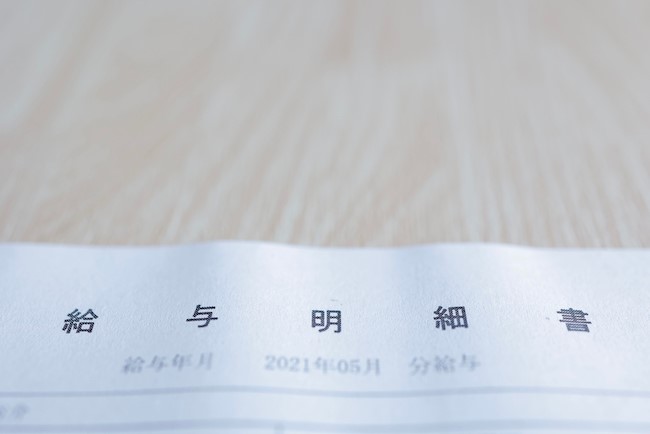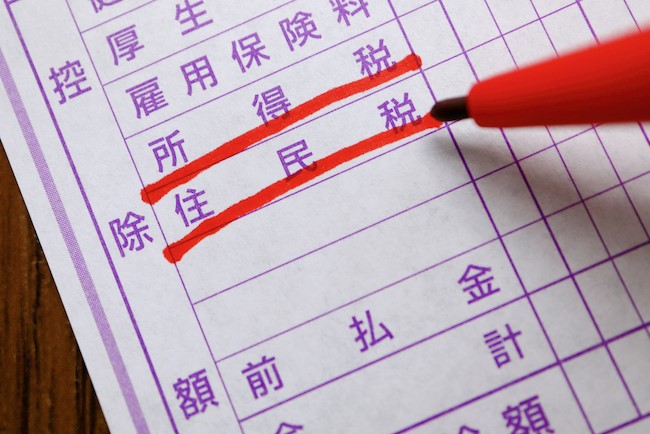Translating Your Japanese Payslip: Essential Vocabulary

If you work as an employee for a company in Japan, it is important to be fully aware of how your wages are being calculated, what percentage is being withheld, and for what reasons it is being withheld. Fortunately, payslips should be provided by your employer, albeit in Japanese.
To help you decipher your Japanese payslip, the following information goes into the details of what to expect on your payslip and key phrases to look out for.
How to Understand Payslips in Japan

A payslip, or kyuyo meisai (給与明細), is an important document for keeping track of information relating to your employment in Japan. It is a record of your hours/days worked, salary, taxes paid, overtime, and more. In Japan, it is common to receive the payslip a few days before payday. This may be different from other countries, where it is standard to receive the payslip on the same day or after the payment has occurred.
A payslip is often provided in paper and electronic form, however, some companies have been moving to electronic only. Because of this, be sure to archive any digital payslips by emailing them to a personal account or printing off a copy in the office if allowed. It is also advisable to keep your payslips for up to two years, as they are proof of income and tax payment.
It is a good idea to check your payslips regularly to make sure there are no mistakes. While employers will do their best to keep accurate records, there is always the possibility of human error.
The easiest way to break down a Japanese payslip is to look at a few key categories. These include attendance, payment, and deductions.
Attendance
The attendance section of your payslip, called kintai, kintai-hoka (勤怠・勤怠他) covers the days/hours you worked, including holidays, paid leave, and absences. Here is some key vocabulary.
・Shukkin nissu (出勤日数) and shukkin jikan (出勤時間) are days worked and hours worked, respectively. The word used will probably depend on your contract, with a full-time contract more likely to use “days” and a part-time contract more likely to use “hours.”
・Kekkin nissu (欠勤日数) refers to absences and includes any days off that are not part of your paid leave.
・Yukyu nissu (有休日数) refers to any paid leave days that were used, while yukyu zan nissu (有休残日数) is your remaining paid leave.
・Tokubetsu kyuka nissu (特別休暇日数) refers to any special leave that was taken in the relevant month, such as condolence leave.
・Chikoku sotai jikan (遅刻早退時間) refers to days that you arrived late or left early.
・Futsu zangyo jikan (普通残業時間) is regular overtime, while shinya zangyo jikan (深夜残業時間) is overtime that took place overnight (usually from 22:00–5:00). If your job involves overtime, this will also be included on your payslip.
Payment
The next main section is payments, or shikyu (支給). This includes standard salary, overtime payments, and any allowances that are included in your contract.
・Your base salary will be listed as kihonkyu (基本給).
・Overtime work allowance is labeled as zangyo teate (残業手当) and overnight overtime is shinya zangyo teate (深夜残業手当).
・If you are required to work on a holiday, this will be recorded as kyujitsu shukkin (休日出勤) or hotei kyujitsu teate (法定休日手当).
Many companies include various allowances in their contracts. These are also recorded in payslips.
・Some of the most common allowances include housing allowance, or jutaku teate (住宅手当), and commuting allowance, or tsukin teate (通勤手当).
・Some other possible allowances include shikaku teate (資格手当), a qualification allowance that is paid to employees who are engaged in courses or programs to help them acquire further qualifications or who already possess further qualifications, and kazoku teate (家族手当), a family allowance paid to employees who are supporting a family.
Deductions

Finally, there is the deductions section, or kojo (控除). A number of deductions will be made monthly from your salary to cover various taxes and contributions. This is standard for full-time contracts, but may differ for part-time contract employees.
・Kenko hoken (健康保険) is your health insurance premium set by the insurance company used by your employer.
・Kosei nenkin hoken (厚生年金保険) is your pension contribution. This is at a rate set by the government. These payments are very important and must be included.
・Juminzei (住民税) is resident tax and differs depending on the area in which you live.
・Shakai hoken ryokei (社会保険料計) is the total of the social insurances listed above. These taxes can all be covered individually through public insurance for people on part-time contracts.
・Koyo hoken ryo (雇用保険料) is unemployment insurance and entitles employees to unemployment benefits if they lose their job.
・Gensen shotokuzei ((源泉) 所得税) covers your withholding tax or income tax. If you hold multiple contracts, this can be adjusted at the end of the year.
These are the main deductions that are involved in Japanese payslips. There are occasionally other deductions depending on individual circumstances but almost all full-time contracts will cover the above.
Navigating Work Life in Japan
A common part of employed life is receiving a regular payslip. This is just as true in Japan as in any other country. While some of us may not want to spend the time dissecting each payslip, it is important to understand the general format and key pieces of information included on it.
Understanding the Japanese payslip format and vocabulary can be difficult for expats who are still in the process of learning Japanese or who are new to Japan. However, knowing the basics of what is included in your payslip and their meanings can be very useful for budgeting, making estimates for future tax, health insurance, and other payments, and generally keeping track of your salary. This guide should help you navigate your Japanese payslip and easily find information that is relevant and important to you, no matter where you work in Japan.
For more information on Japanese businesses and life working for a Japanese company, from proper etiquette, to hanko signature seals and much more, feel free to check out our many other articles on the subject.
















